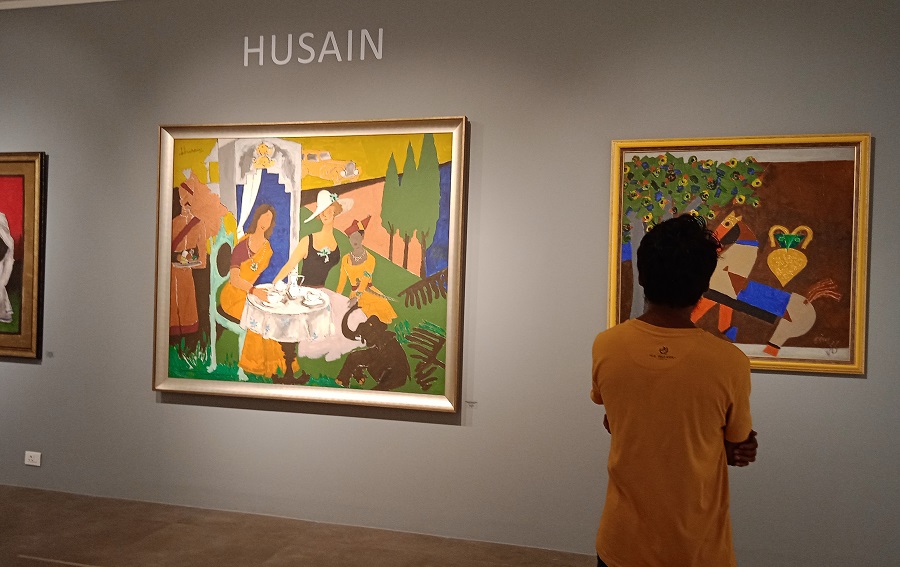After Indian independence, a group of artists started to think about ‘modern Indian art’ differently, and they thought loudly and formed a group baptised with the name of Progressive Artists Group Bombay. The group reflected that a ‘newly independent country required a face of a new art movement. Progressive Artists Group Bombay (1947-1956) is now recalled as a pathbreaking exercise to modernise Indian art after independence, known as the abbreviated title ‘the PAG.’
Souza was the leading figure and forming father of PAG, and S H Raza, M F Husain, K H Ara, H A Gade, and Sadanand Bakre were the members, and Akbar Padamsee, Tyeb Mehta, Bal Chhabda, Vasudeo S Gaitonde, Ram Kumar and Krishna Khanna close to the group. They start synthesising European styles, including Post-Impressinonism, Cubism and Expressionism.
From an Indian art historical perspective, PAG is a legendary movement created by legends, and by the way, they became legends because of the creation of that movement. A show opens in Shridharani Art Gallery at Triveny Kala Sangam, titled Luminous Legacy, celebrating 75 Years of Progressive Artist’s Group that revisits the legacy of the Indian Modern Art movement based in Bombay that impacted Indian Art impressively. The progressive Art movement and members’ works are again at the discussion table of Art critics and enthusiasts. This show brings back the legacy of ‘Modern Indian Art and harbours us to the world of unknown ports of Modernised Indian thoughts.
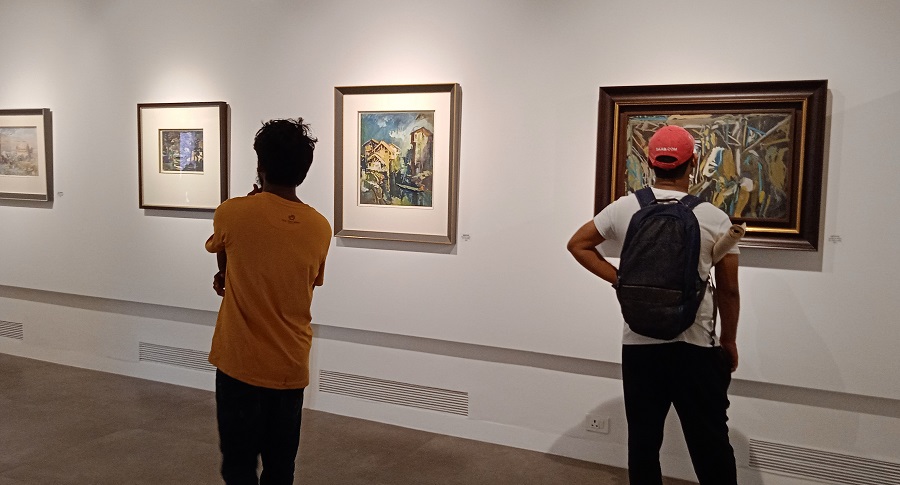
Some of the questions should be answered or even asked them loudly. PAG claimed their legacy from the point the group was established. Why did our nation’s first progressive art movement start in Bombay? A book titled Arrival Cities, edited by Burcu Dogramaci, Mareike Hetschold, Laura Karp Lugo, Rachel Lee, and Helene Roth, gives some insight into the ‘city’ and ‘modern’ human\art movement. Scholars of Urbans studies use and focus on the cross-border relocations of artists, architects and intellectuals in the first half of the 20th century and focus on the cities of Bombay, Buenos Aires, Istanbul, London, New York, and Shanghai. They argue ‘the presence of exiled artists changed cities, and the urban topographies shaped the actions and interactions of artists.
In this book, Rachel Lee gives an excellent overview of the cultural changes of the Bombay-based art movement called PAG. In an essay titled ‘The Taj Mahal Palace Hotel and Green’s Hotel as Sites of Cultural Production in Bombay, Lee wrote about how the change occurred in Bombay after Indian independence and what caused that change.
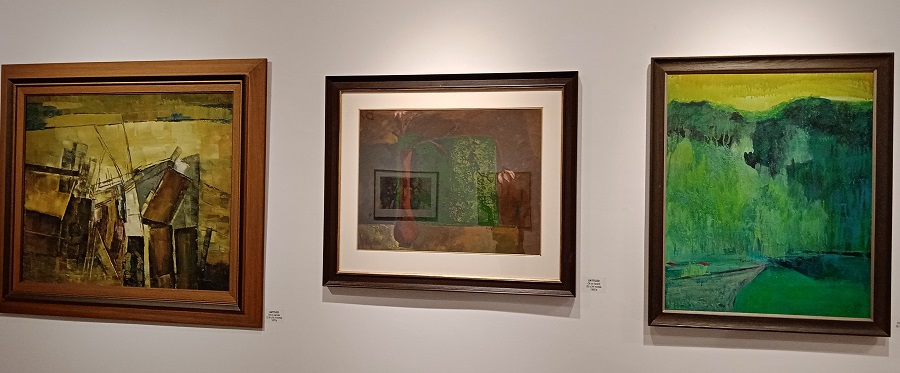
Before and after Bombay transformed into the economic capital of India, that port city created a wealthy local industrial class capable of investing money into the Art market. ‘They contributed hugely to shaping the metropolis’s topography, including the Artscape, and patronising the arts, writes Lee. Another element Lee bring to the essay is the arrival of fascism in Europe which affects the topography of the cities around the world, including Bombay, which changed into a hub of a multicultural population filled with people from around the world. ‘Among them were dancers, composers, screenwriters, art historians, art collectors, painters, illustrators, photographers and writers. This is the historical condition of the ‘PAG and the undercurrent of the formation. Most PAG members were experienced with the ‘Modern’ European art movement through their scholarships and the European friends who settled in Bombay then.
They discover something called ‘Modern’ to question the contemporary art practice of their time. This group represents ‘Modern’ India with its diversity and political thought and the representation of a different socio-political background; Muslims migrated to India in the time of partition, and painting the Nehruvien ideas of a ‘new nation’, they portray the pluralist nature of a polity.
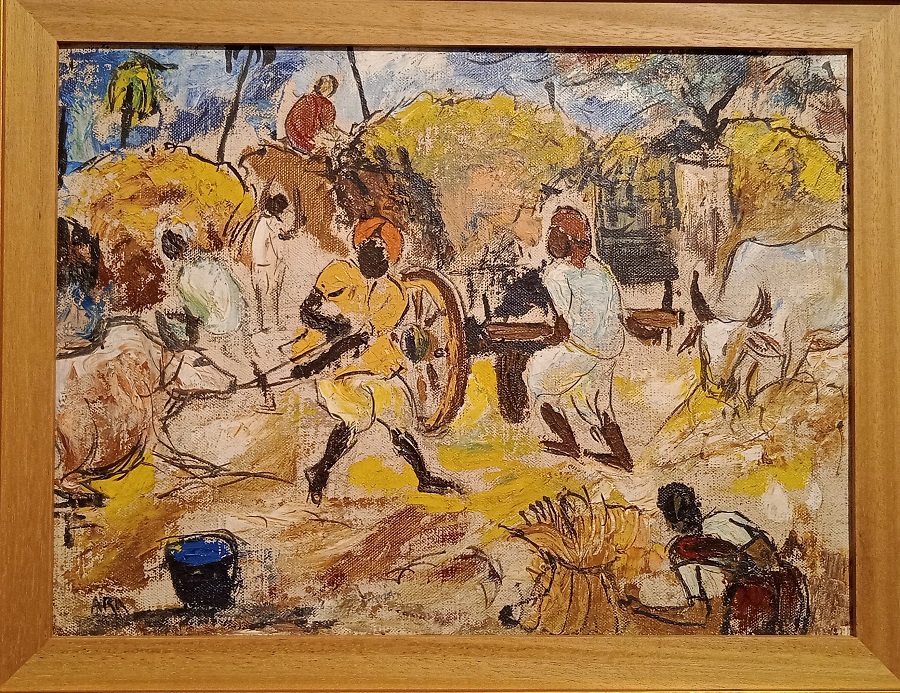
Raza Foundation brought the group show of PAG members and exhibited their limited number of works. ‘The six who formed the Progressive Artists included Hindus, two Muslims and one Christian. Despite dramatic differences in their social backgrounds and temperament, they were building on this climate of thought to create a secular and ‘free’ India; Art historian and Scholar Geeti Sen note they included as part of the show, which explained the historical context of the group. ‘The PAG artists moved in many different directions. They were walkers, however, on ‘the road not taken. From landscapes and cityscapes to inscapes, from colour to concept, from narration to abstraction, from still life to vibrant, active life, and emotions to ideas, the artists covered a wide range of life, reality and art. The show is a modest attempt to underline their continuing presence and relevance, Ashok Vajpeyi comments about the group.
These two observations and comments give an idea about the PAG, and they resonate with the presence and active discussions of the members of a great movement and their works. For Raza, painting does not reside in the meaning of form, which is essential and appealed to us, and ‘we tried to organise forms and colour like musicians to go beyond the subject, to find pure pictorial elements, as said Raza. The progressive art movement, for Raza, is the result of a genuine renewal of our thinking about India.
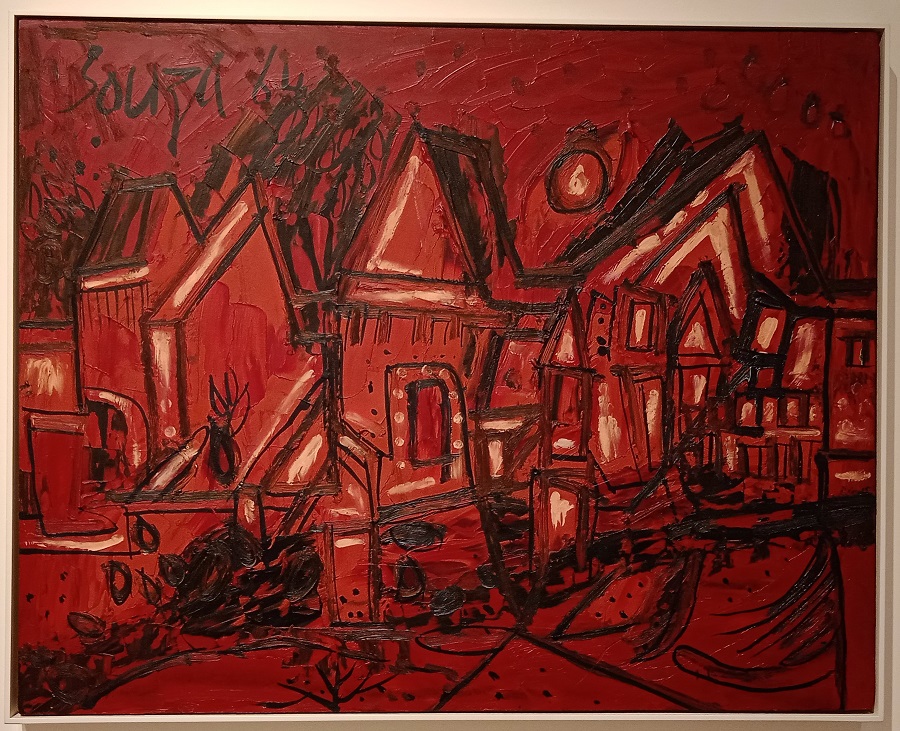
Bakre paint as he likes, and his interest in forms has gone beyond the pale imitations of subject matter, which is almost unimportant to me. Gade looks and perceives the subject differently, and for Gade, people are only shapes, a human being or a tree is only a colour area, and Gade believes illustration is not modern painting. Ara is fond of Indian independence struggles, and Gandhian thought of village life. He was a part of Gandhi’s march during the Salt Satyagraha, and spontaneously, he was drawn as a part of the Indian independence movement.
M F Husain was visionary and rebellious in visual language. Husain cut down the perspective of modern Indian art. He used his canvas to vanish the idea of communities, race and caste and bring a ‘secular’ and ‘new Indian’ citizen into the paintings. ‘The magic and spectacle of religious festivity had burned into his psyche, and for him, there was no conflict in that he described as India’s unique ‘composite culture’, writes Geeti Sen.

Krispin Joseph PX, a poet and journalist, completed an MFA in art history and visual studies at the University of Hyderabad.


